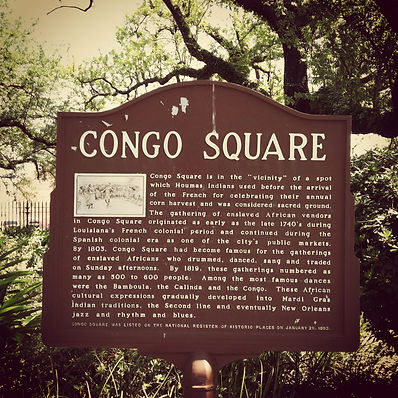An Offering of Spiritual Reparation
In Ouidah, Benin, a National Vodun Day is celebrated on January 10th. African and diaspora artists were initially invited to create monuments to mark important points along the Slave Route – the path captured people were marched along on their way to the beach and the slave boats that carried them into slavery in the Americas. On the National Vodun Day, there is a ceremonial procession to each of the major sites along the march. The procession begins under a tree where the slave auctions were held, then to the Tree of Forgetting, around which they were walked three times so they would forget who they were and where they came from, then the Memorial of Repentance (Dedicated to “Repentance for the complicity of their ancestors in the slave trade and “To petition the forgiveness of the descendants of enslaved Africans now living in the diaspora… a plea for absolution.”*), then to the Somai Enclosure where they were said to have waited for the slave ships to arrive, then to the Tree of Return where the slaves were walked around the tree three times so that their spirits would ultimately return to their native land, then to the Door of No Return, a large arch where the enslaved were forced onto the slave ships. A most recent monument is near the Door of No Return and is called the Door of Return, “An homage to and celebration of the transatlantic descendants of African slaves”*. On January 10th, National Vodoun Day, the Dagbo King leads the procession every year to each of these sites, where small ceremonies are performed, followed by a major Vodun ceremony.
There are similar sites of great importance to the experience of enslaved people in New Orleans. The The Algiers Landing where the enslaved were taken off the ships, the holding places, the slave auctions, Congo Square and so forth. There are already monuments and plaques in some of these places, but we envision commissioning several new ones as well. The event would lean into healing for everyone: for acknowledging and owning the history of slavery and racism as well as for honoring the sacrifice of the enslaved and their formidable achievements and contributions to New Orleans, Louisiana, the US, the world. It could be an annual event that adds to the cultural calendar of New Orleans
Modeled after our sister event in Benin, our own International Vodou Day will have many elements rooted in those traditions. One tradition we plan on mirroring is the creation of monuments at important locations related to slave trade - where the enslaved were taken off of ships, the holding places, auction spaces, and where they were able to be in community - followed by a ceremonial procession to those sites. One of the monuments we envision is a sister arch to Benin’s own “Door of No Return”. Our procession will be led by New Orleans’ black spiritual leaders and elders, many of whom are already directly involved with the planning and creation of this event. Our goal is to grow National Vodou Day into becoming an important annual event, adding to our cultural calendar and uplifting the unique and vital Vodou community of New Orleans.
*Rush, Dana, 2013. Vodun in Coastal Benin: Unfinished, Open-Ended, Global, Nashville Tennessee. Vanderbilt University Press
By Kulttuurinavigaattori - Own work, CC BY-SA 4.0, https://commons.wikimedia.org/w/index.php?curid=75442821

By Sky Bradshaw

By Falcanary at English Wikipedia - Transferred from en.wikipedia to Commons., Public Domain, https://commons.wikimedia.org/w/index.php?curid=2464961
.png)

